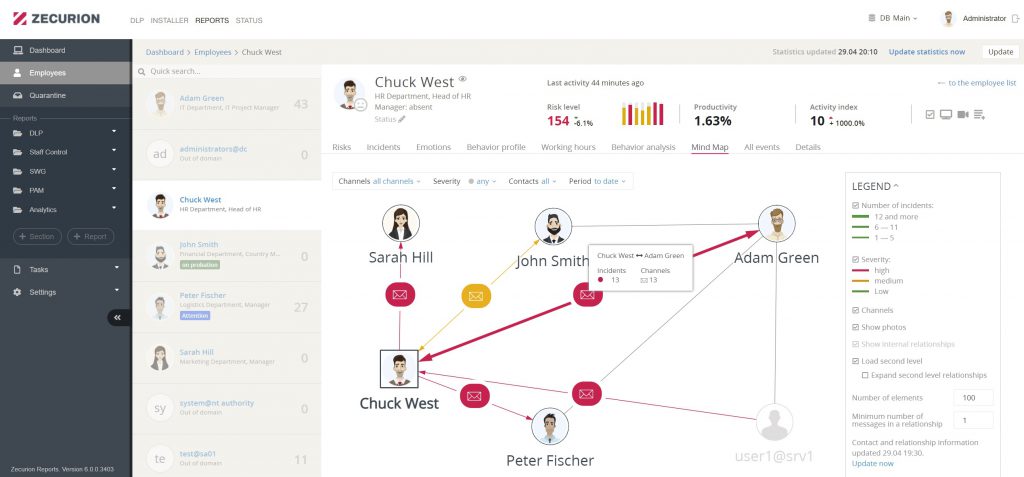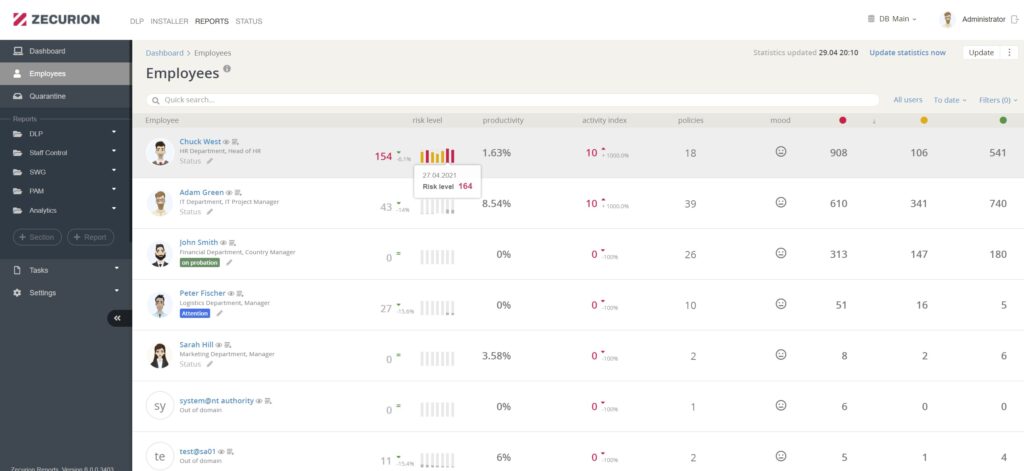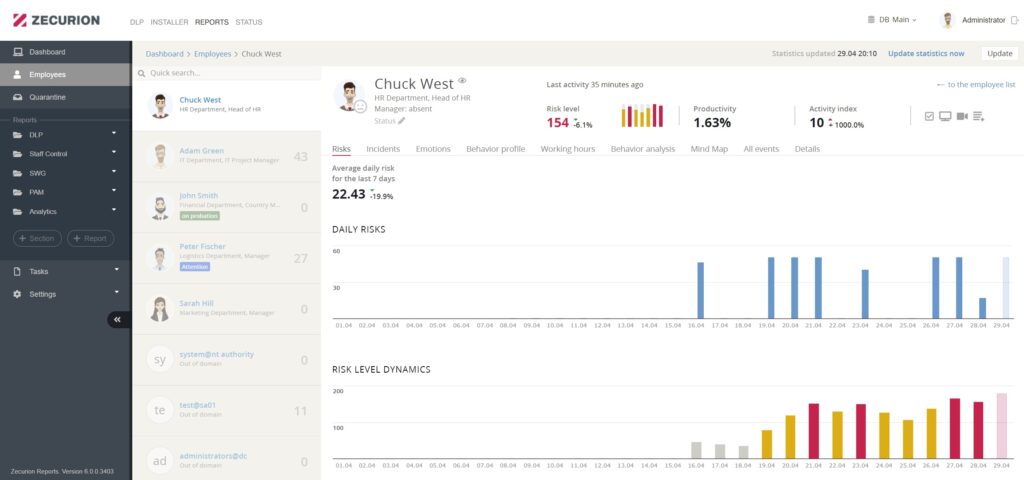

Zecurion Next Generation DLP 11 provides a risk score and change dynamics to assess each employee. For quick search and acquaintance use a header with indicators and hotkeys.
To make analysis even easier use Behavior profile, collection of patterns of specific behaviors, to identify employees with similar characteristics. If you see similarities, threatening your data, you can put these users under closer supervision.


You can see dynamics on each emotion, highlighted by respective color.


UBA compares current employees’ parameters with their average values. A sharp deviation may signal a potential threat to information security or indicate a compromise of user credentials.

